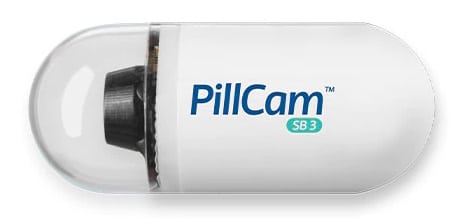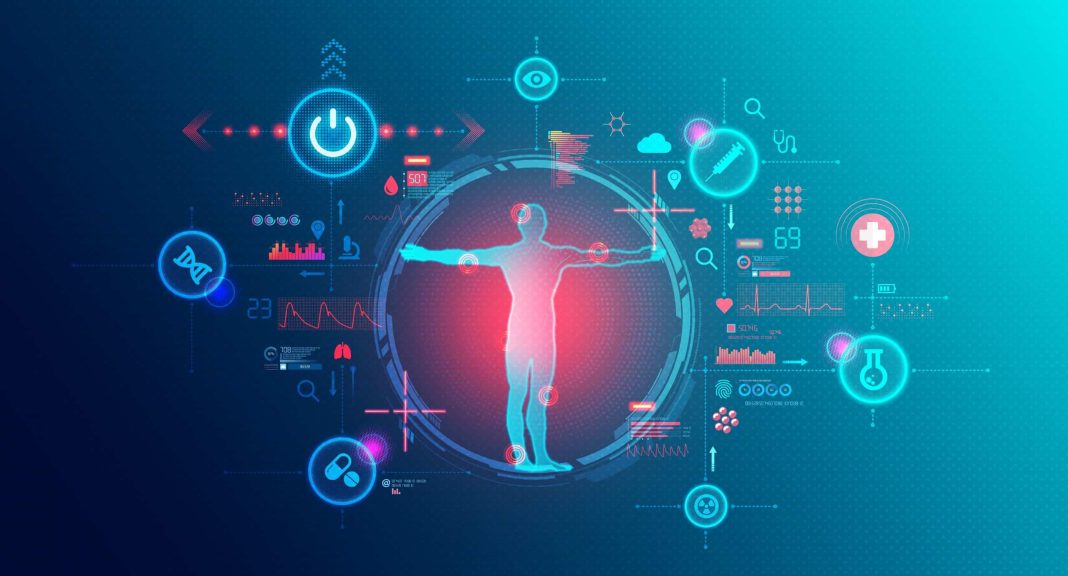The healthcare industry is constantly evolving, with new technologies emerging every year that promise to revolutionize patient care. One area of innovation that is gaining momentum is digital drug delivery, which refers to the use of technology to improve the delivery of medications to patients. The latest advancements in this field are transforming the way we think about patient care, offering new and exciting possibilities for improving medication adherence, accuracy, and efficacy.
In this article, we will take a closer look at the latest technologies in digital drug delivery, including wearable devices, smart pills, and other cutting-edge medical devices. We will examine the potential benefits of these technologies for patients and healthcare providers, as well as the challenges and considerations that come with implementing them in clinical practice.
Beyond the Pill: How Digital Drug Delivery is Transforming Patient Care
Wearable Devices for Digital Drug Delivery
Wearable devices have become increasingly popular in recent years, with a wide range of devices available that can track everything from heart rate and blood pressure to activity levels and sleep patterns. In the field of digital drug delivery, wearable devices are being used to monitor vital signs and drug levels in real-time, providing healthcare providers with valuable data to improve patient care.
(Image Credit: vitalconnect)
One example of a wearable device for digital drug delivery is the VitalPatch, a wearable patch that can monitor vital signs such as heart rate, respiratory rate, and body temperature. The VitalPatch can also monitor drug levels in the blood, providing healthcare providers with valuable information about how a patient is responding to a medication. This information can be used to adjust dosages, improve medication adherence, and prevent adverse reactions.
Another example of a wearable device for electronic drug delivery is the SmartCap, a bottle cap that can monitor medication usage and remind patients when it is time to take their medication. The SmartCap uses Bluetooth technology to sync with a patient’s smartphone, providing alerts and reminders when it is time to take medication. The SmartCap can also monitor medication usage and provide healthcare providers with valuable data on medication adherence.
Wearable devices have the potential to greatly improve patient outcomes by enabling real-time monitoring of vital signs and drug levels, enhancing medication adherence, and increasing patient engagement in their own care. However, there are also challenges and considerations to be aware of when implementing wearable devices in clinical practice, such as ensuring data privacy and security, patient compliance with device usage, and integration with existing healthcare systems.
Smart Pills for Digital Drug Delivery
Smart pills are another exciting development, offering a way to deliver medication directly to targeted areas of the body. Smart pills contain tiny sensors that can track the pill’s progress through the body, providing healthcare providers with valuable information on how the medication is being absorbed and metabolized.
One example of a smart pill for digital therapeutics is the Proteus Discover, a pill that contains a sensor that can track the pill’s location in the body and provide data on medication adherence. The Proteus Discover system also includes a wearable patch that can monitor vital signs and track medication usage, providing a comprehensive view of a patient’s health status and medication regimen.
Another example of a smart pill is the PillCam, a pill-shaped camera that can be swallowed to provide images of the digestive system. The PillCam can help diagnose conditions such as Crohn’s disease and colorectal cancer, and can also be used to monitor the effectiveness of medication in treating these conditions.

(Image Credit: Medtronic)
The potential benefits of smart pills are significant, including targeted drug delivery, improved medication adherence, and enhanced diagnostic capabilities. However, there are also challenges and considerations to be aware of when implementing smart pills in clinical practice, such as ensuring patient comfort and safety, managing data privacy and security, and navigating regulatory hurdles.
Other Digital Drug Delivery Technologies
In addition to wearable devices and smart pills, there are a wide range of other digital drug delivery technologies that are currently being developed and tested. These include:
- Implantable drug delivery devices, which can deliver medication directly to targeted areas of the body and provide long-term treatment for conditions such as chronic pain and diabetes.
- Electronic skin patches, which can be used to deliver medication through the skin and monitor vital signs such as blood glucose levels.
- 3D-printed drug delivery devices, which can be customized to a patient’s specific needs and deliver medication in unique ways.
While these technologies are still in development and testing, they offer exciting possibilities for the future of digital drug delivery and the healthcare industry as a whole.

Benefits and Challenges of Digital Drug Delivery
The potential benefits of digital drug delivery are significant, including improved medication adherence, targeted drug delivery, and enhanced diagnostic capabilities. By leveraging the latest advancements in wearable devices, smart pills, and other smart drug delivery technologies, healthcare providers can more effectively monitor patient health and improve patient outcomes.
However, there are also challenges and considerations to be aware of when implementing digital drug delivery in clinical practice. One of the biggest challenges is ensuring patient comfort and safety, particularly when it comes to devices that are implanted in the body or require patients to swallow sensors or cameras. Another challenge is managing data privacy and security, as these technologies can collect sensitive patient data that must be protected from unauthorized access or use.
Regulatory hurdles are also a consideration when it comes to digital drug delivery, as new technologies must undergo rigorous testing and approval processes before they can be used in clinical practice. Healthcare providers and device manufacturers must navigate complex regulatory frameworks to ensure that such technologies are safe, effective, and compliant with all relevant regulations.
What Countries Are Currently Leading The Industry?
The US, UK, and Germany lead the development and adoption of digital drug delivery systems due to their strong healthcare and technology industries. Japan and South Korea are also at the forefront of developing related medical devices. China and India’s growing healthcare industries provide opportunities for innovative solutions, while Israel and Singapore’s focus on healthcare innovation may also emerge as leaders.
Collaboration and innovation among healthcare providers, technology companies, and regulatory bodies will be necessary for global adoption.
Potential Adoption Rates Of Digital Drug Delivery Systems
To predict potential adoption rates for digital drug delivery systems, we can look at other industries that have successfully integrated digital technology, such as digital health, fintech, e-commerce, transportation, and edtech. These industries have all seen strong growth potential, driven by advances in technology, increased consumer awareness, and the potential for improved outcomes.
Despite unique challenges, such as patient comfort and safety, data privacy and security, and regulatory hurdles, it’s reasonable to predict that digital drug delivery systems will continue to be adopted at an increasing rate in the coming years as they offer similar benefits in terms of convenience, safety, and efficacy.
Digital Drug Delivery and Recreational Drugs
Digital drug delivery doesn’t have a direct relationship with recreational drugs (such as cannabis, THC, HHC, LSD, MDMA, Psilocybin, Ketamine, Magic Mushrooms, Amanita Mushrooms, etc.) but it could have potential implications. Wearable devices and other digital health technologies could be used to monitor drug use in patients, prevent drug diversion and abuse, and help with addiction treatment. Future advances could also have implications for the development of new treatments for substance use disorders. Overall, digital health technologies could play a role in the safe and effective delivery of medications used in addiction treatment.
Potenctial For Abuse
Digital drug delivery technologies have the potential to be abused, similar to any technology that impacts human health and behavior. Potential abuses include diversion, hacking, inappropriate use, privacy violations, and addiction. It is crucial that healthcare providers, technology companies, and regulatory bodies collaborate to address these risks and ensure safe and appropriate use of such systems. Safeguards could include measures to prevent diversion and hacking, training for healthcare providers and patients, and implementing data privacy and security measures.
Future Directions for Digital Drug Delivery
As digital drug delivery technologies continue to evolve, there are exciting possibilities for the future of healthcare. From improving medication adherence to enabling targeted drug delivery and enhancing diagnostic capabilities, it has the potential to transform the way we deliver healthcare to patients.
In the future, we can expect to see further advancements in wearable devices, smart pills, and other digital drug delivery technologies. We may also see the development of new technologies that leverage artificial intelligence, machine learning, and big data analytics to improve patient care and outcomes.
Main Takeaway Points
- Digital drug delivery technologies, including wearable devices and smart pills, are transforming the way we think about drug delivery and patient care.
- Wearable devices are becoming increasingly sophisticated, offering targeted drug delivery and real-time monitoring of vital signs and other health metrics.
- Smart pills, such as the Proteus Discover system and the PillCam, offer improved medication adherence and enhanced diagnostic capabilities.
- Other technologies, including implantable devices, electronic skin patches, and 3D-printed devices, are currently in development and offer exciting possibilities for the future of healthcare.
- While digital drug delivery offers many potential benefits, there are also challenges and considerations to be aware of, including patient comfort and safety, data privacy and security, and regulatory hurdles.
- As these technologies continue to evolve and become more widely available, they have the potential to transform the way we deliver healthcare and improve patient outcomes.
- While the west is currently leading the industry, we can see other coutries, especially from Southeastern Asia, entering the race.
- Looking at other industries with similar growth patterns, we can predict that digital drug delivery systems will continue to be adopted at an increasing rate in the coming years.
Conclusion:
The future of digital drug delivery is bright, with new technologies emerging every year that offer exciting possibilities for improving patient outcomes and the overall healthcare experience. From wearable devices and smart pills to implantable devices and 3D printing, the latest advancements in this fields are transforming the way we think about patient care and offering new solutions to longstanding healthcare challenges.
As these technologies continue to evolve and become more widely available, it is important to consider the potential benefits and challenges of implementing them in clinical practice. While digital drug delivery offers many potential benefits, there are also considerations around patient comfort and safety, data privacy and security, and regulatory hurdles that need to be addressed.
Keep Yourseldf Informed
Stay up-to-date with the latest news and trends in the health, drugs and wellness industries by subscribing to Cannadelics Sunday Edition, our weekly newsletter. Get exclusive access to in-depth articles, expert insights, and cutting-edge research on trending topics. Sign up now to stay informed and stay ahead of the curve in healthcare innovation.





